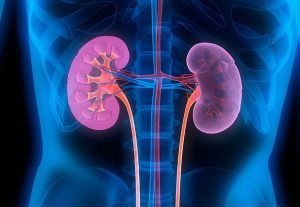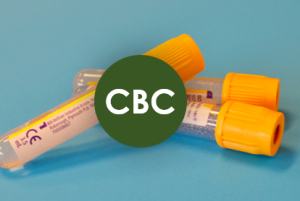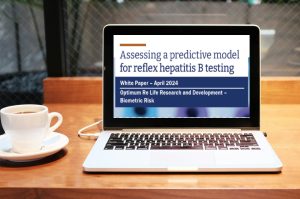Devastating mortality data
In 2018, the National Center for Health Statistics reported life expectancy had declined a stunning 2 years in a row, fueled in part by opioid drug overdoses. Chronic liver disease and suicides were cited as contributing factors. ExamOne encouraged companies not already doing routine opioid screening to begin doing so in light of the devastating new mortality data.
ExamOne conducted a large-scale cost/benefit study to measure the protective value of adding the “NIDA 5” (marijuana, PCP, opiates, amphetamines, and cocaine) to the urine profile. Mortality savings exceeded testing costs by an over 2:1 margin.
And remember that cotinine screening mentioned earlier? Insurers by the early 2000s were carving out “preferred” exceptions for pipe smokers and chewers. Not surprisingly producers and applicants began claiming the positive cotinine test was triggered by pipes or chewing tobacco. To assist insurers with these appeals, ExamOne began offering thiocyanate testing, a test that conclusively settles the question of whether tobacco type matters.
Revolutionized underwriting with data
ExamOne continued as the leader in lab testing innovation with the introduction of algorithmic data scoring in 2010. Relying on irrefutable laboratory data and physical measurements, insurers were now able to more accurately segment risks.
Risk IQ became one of the building blocks for LabPiQture™, the industry-changing algorithmic scoring tool that incorporates current and historic lab data—including prior insurance lab reports, physical measurements, and pathology reports—into the underwriting final decision. Today, LabPiQture also captures seven years of prior insurance exam data.
White papers from GenRe and Hanover Re in 2020 validated the predictive value of LabPiQture and in August 2021 Hannover Re announced their collaboration with ExamOne to incorporate real-time, clinical laboratory data into Hannover’s hr ReFlex automated underwriting solution for life insurers.
The quest for faster turnaround times, reducing acquisition expenses, and maintaining or improving mortality began well before our newly minted underwriter joined the underwriting ranks in 1972. While “radical underwriting redesign” was groundbreaking when introduced 25+ years ago, it still didn’t satisfy the drum beat for nearly instant decisions without giving up the invaluable data provided by lab results. LabPiQture has revolutionized underwriting by providing real-time lab data, both historic and current, that allow for those instant underwriting decisions in a large percentage of cases.
A legacy of bringing essential tools to life insurers
For over 50 years, lab testing has been an essential tool for life insurers. For those seeking data unique to individual applicants, validated by numerous mortality studies, unaffected by unintentional bias that may be present in other data tools, and compliant with all state insurance regulations, lab testing is here to stay.




















In the previous installments of our 50 Years of Laboratory Testing series, we explored the tools an underwriter had at their disposal from the 1970s until the early 2000s. From the mid 2000s until the present, declining life expectancy, increase drug use and smoking, plus the powerful tool data has become created huge changes to life insurance underwriting.
Devastating mortality data
In 2018, the National Center for Health Statistics reported life expectancy had declined a stunning 2 years in a row, fueled in part by opioid drug overdoses. Chronic liver disease and suicides were cited as contributing factors. ExamOne encouraged companies not already doing routine opioid screening to begin doing so in light of the devastating new mortality data.
ExamOne conducted a large-scale cost/benefit study to measure the protective value of adding the “NIDA 5” (marijuana, PCP, opiates, amphetamines, and cocaine) to the urine profile. Mortality savings exceeded testing costs by an over 2:1 margin.
And remember that cotinine screening mentioned earlier? Insurers by the early 2000s were carving out “preferred” exceptions for pipe smokers and chewers. Not surprisingly producers and applicants began claiming the positive cotinine test was triggered by pipes or chewing tobacco. To assist insurers with these appeals, ExamOne began offering thiocyanate testing, a test that conclusively settles the question of whether tobacco type matters.
Revolutionized underwriting with data
ExamOne continued as the leader in lab testing innovation with the introduction of algorithmic data scoring in 2010. Relying on irrefutable laboratory data and physical measurements, insurers were now able to more accurately segment risks.
Risk IQ became one of the building blocks for LabPiQture™, the industry-changing algorithmic scoring tool that incorporates current and historic lab data—including prior insurance lab reports, physical measurements, and pathology reports—into the underwriting final decision. Today, LabPiQture also captures seven years of prior insurance exam data.
White papers from GenRe and Hanover Re in 2020 validated the predictive value of LabPiQture and in August 2021 Hannover Re announced their collaboration with ExamOne to incorporate real-time, clinical laboratory data into Hannover’s hr ReFlex automated underwriting solution for life insurers.
The quest for faster turnaround times, reducing acquisition expenses, and maintaining or improving mortality began well before our newly minted underwriter joined the underwriting ranks in 1972. While “radical underwriting redesign” was groundbreaking when introduced 25+ years ago, it still didn’t satisfy the drum beat for nearly instant decisions without giving up the invaluable data provided by lab results. LabPiQture has revolutionized underwriting by providing real-time lab data, both historic and current, that allow for those instant underwriting decisions in a large percentage of cases.
A legacy of bringing essential tools to life insurers
For over 50 years, lab testing has been an essential tool for life insurers. For those seeking data unique to individual applicants, validated by numerous mortality studies, unaffected by unintentional bias that may be present in other data tools, and compliant with all state insurance regulations, lab testing is here to stay.